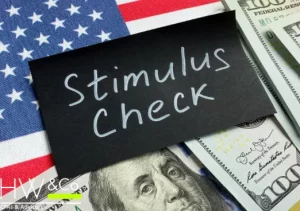 The IRS announced the next batch of Economic Impact Payments will be issued this week. Many of these are coming by paper check or a prepaid debit card.
The IRS announced the next batch of Economic Impact Payments will be issued this week. Many of these are coming by paper check or a prepaid debit card.
How will I get the Economic Impact Payment?
For taxpayers receiving direct deposit, payments began processing on Friday, March 19th, and will have an official pay date of Wednesday, March 24th. A large number of this latest batch of payments will also be mailed, so taxpayers who do not receive a direct deposit by March 24 should watch the mail carefully in the coming weeks for a paper check or a prepaid debit card, known as an Economic Impact Payment Card, or EIP Card.
Since the American Rescue Plan Act (ARPA) became law on March 11th, the IRS started delivering the third round of Economic Impact Payments. The IRS delivered the first batch of $1,400 stimulus payments, mostly by direct deposit, on March 12th.
March 22nd marks the second batch of payments. Additional payments are set to be delivered weekly going forward. The IRS and Bureau of the Fiscal Service converted many payments to direct deposit to speed up the distribution process.
Taxpayers should be aware that their payment of this current EIP may be different than their previous ones.
Paper checks will arrive by mail in an envelope from the U.S. Department of the Treasury. The EIP Card will come in a white envelope displaying the seal of the U.S. Department of the Treasury. The card has the Visa name on the front and MetaBank, N.A. on the back. Each mailing will include instructions on how to activate and use the card. It is important to note that none of the EIP cards issued for any of the three rounds is reloadable and recipients will not be able to reload funds onto an existing card.
More information about these cards is available at EIPcard.com.
Highlights of the third round of Economic Impact Payments
Most people will get $1,400 for themselves and $1,400 for every qualifying dependent claimed on their tax return. Those filing jointly will get $2800. Eligible families will get a payment based on ALL of their qualifying dependents claimed on their return. Unlike the first two, the third stimulus payment is not restricted to children under 17.
The amount of an eligible individual’s EIP3 will be based on the taxpayer’s latest processed tax return from either 2020 or 2019. If the IRS has processed a taxpayer’s 2020 return, the agency will instead calculate the amount of the individual’s EIP3 based on that return.
If a taxpayer’s payment is less than the full amount and based on their 2019 return, they may qualify for a supplemental payment after filing a 2020 tax return. The IRS will check their eligibility. If the agency determines that they are entitled to a larger or full payment, it will send them a supplemental payment covering the difference. If the re-evaluated amount is smaller, they won’t need to pay back the difference. Aside from filing a 2020 tax return, no action is needed on their part.
In addition, the IRS will send EIP3 to people who didn’t file a return but receive Social Security retirement, survivor or disability benefits (SSDI), Railroad Retirement benefits, Supplemental Security Income (SSI), or Veterans Affairs benefits. This is similar to the first and second rounds. Social Security and other federal beneficiaries will generally receive this payment the same way as their regular benefits.
While payments will be automatic for many people, some may need to file a 2020 tax return, even if they don’t usually file. This is so the IRS can send payments for any qualified dependent. People who don’t typically file should file a 2020 tax return to be considered for an additional payment for their dependent as quickly as possible.
Reminder for those who don’t normally file a tax return
Those who don’t normally file their tax return and don’t receive federal benefits may also qualify for these EIPs. If you’re eligible and didn’t get a first or second payment, you may be eligible for the 2020 Recovery Rebate Credit. To receive it, you’ll need to file a 2020 tax return. See the special section on IRS.gov Claiming the 2020 Recovery Rebate Credit.
The IRS reminds taxpayers that the income levels in this new round of stimulus payments have changed. This means that some people won’t be eligible for the third payment even if they received a first or second Economic Impact Payment. Payments will start to be reduced for those making $75,000 or above Adjusted Gross Income. The payments end at $80,000.
Contact HW&Co. for more information or if you have any questions.



